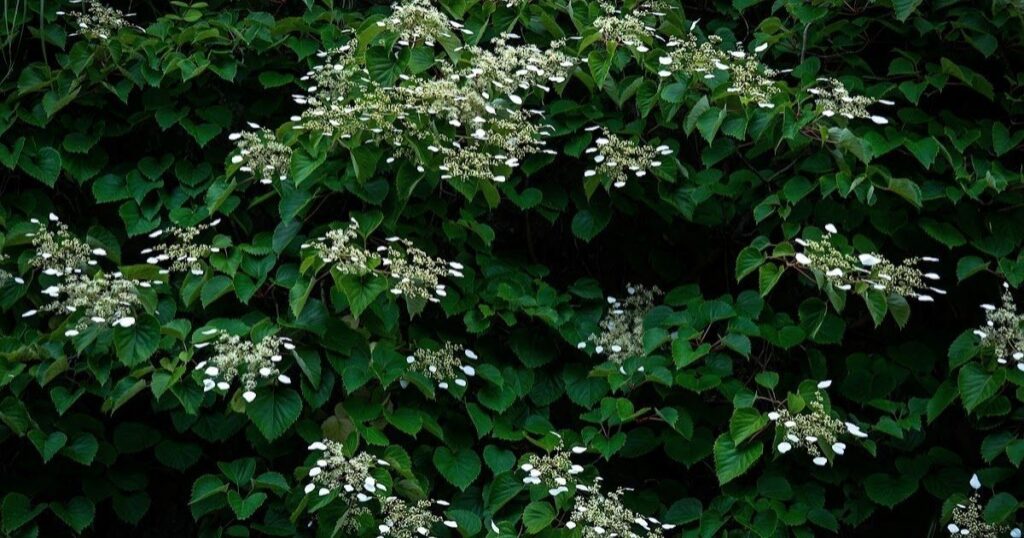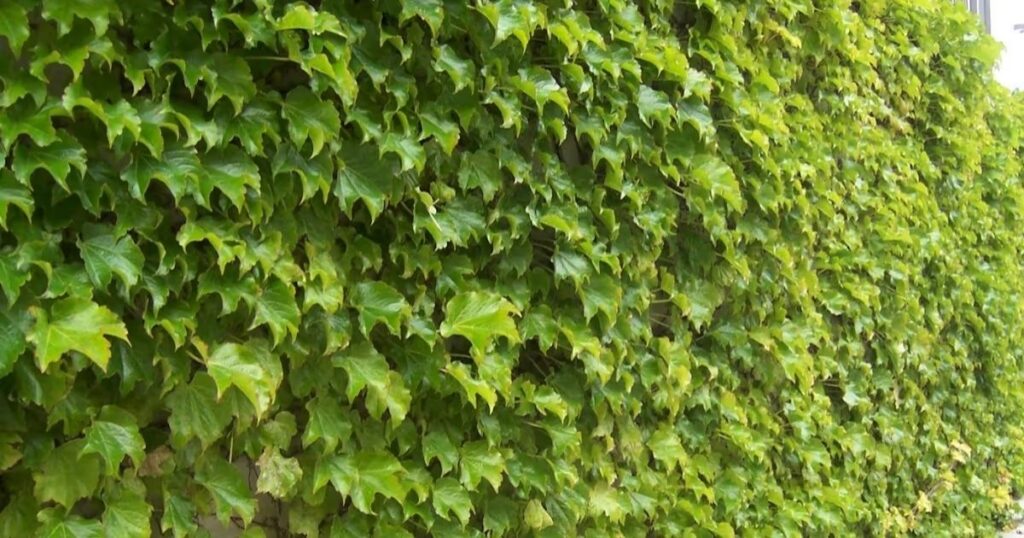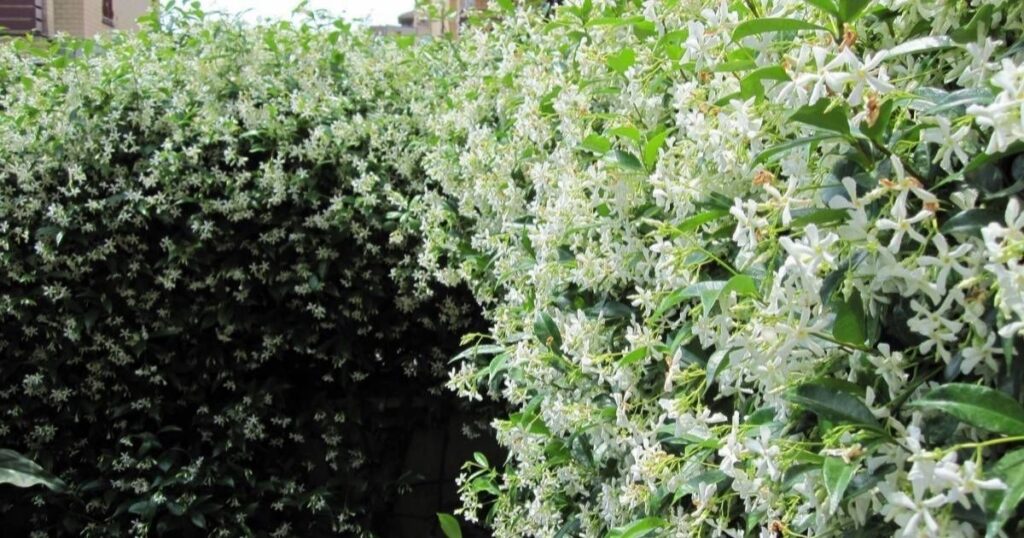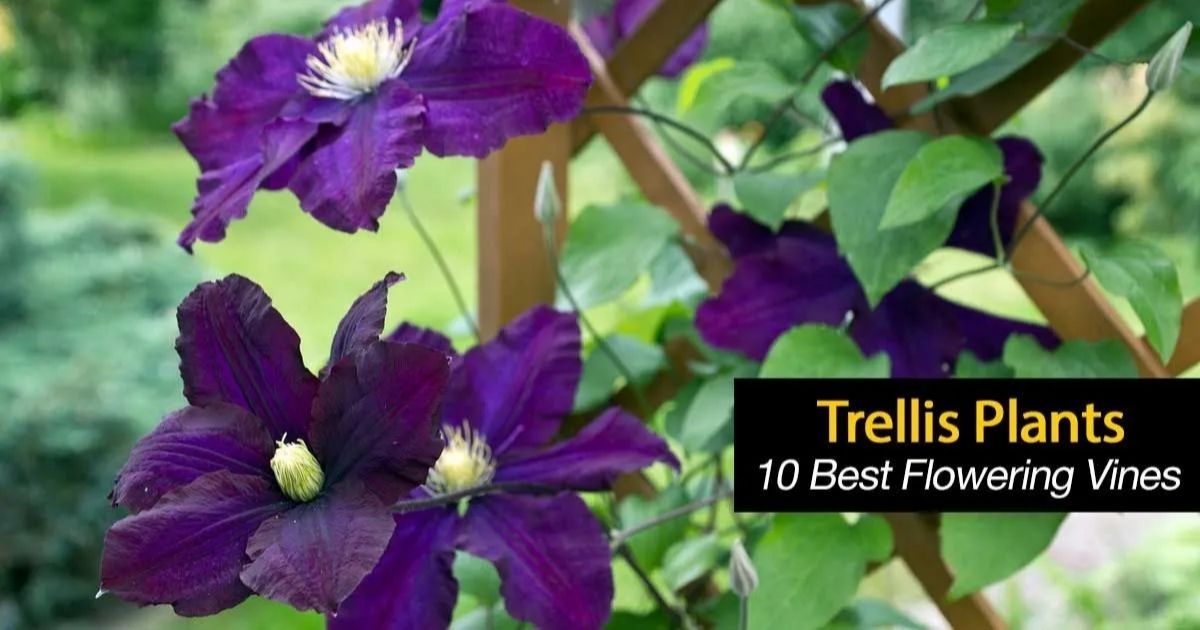Flowering vines are a versatile and beautiful addition to any garden, especially in shaded areas where options for colorful plants may seem limited. These climbing plants add vertical interest and bring life and vibrancy to otherwise dull spaces. In this comprehensive guide, we’ll explore the top 10 flowering vines that thrive in the shade, providing you with everything you need to know to create a stunning, low-maintenance, and wildlife-friendly garden.
Shade-loving plants can be a challenge to find, but these flowering vines offer a perfect solution for gardeners looking to add color and texture to areas with less sunlight. From the bold trumpet vine to the delicate star jasmine, each of these climbing plants has unique characteristics that make them ideal for various garden designs and preferences.
Whether you’re looking to cover a fence, create a living screen, or add interest to a trellis or arbor, these shade-tolerant flowering vines will help you transform your outdoor space. Let’s dive into the world of these beautiful climbers and discover how they can enhance your garden’s appeal.
Trumpet vine (Campsis radicans)
The trumpet vine, also known as Campsis radicans, is a vigorous and fast-growing flowering vine that produces stunning trumpet-shaped blooms in shades of orange, red, or bright yellow. This shade-loving plant is a favorite among gardeners for its ability to quickly cover large areas and its attraction to hummingbirds and other pollinators.
Soil:
Trumpet vine is adaptable to various soil types but thrives in well-draining soil rich in organic matter. It can tolerate both acidic and alkaline soils, making it a versatile choice for many gardens. For optimal growth, aim for slightly acidic soil with a pH between 6.0 and 7.0.
Water:
Once established, trumpet vine is relatively drought-tolerant. However, provide regular watering during the growing season, especially during hot, dry spells for the best performance. Consistent moisture will encourage lush growth and abundant blooms.
Humidity:
Trumpet vine is adaptable to both dry and humid conditions, making it suitable for various climates. However, it performs best in areas with moderate humidity and good air circulation.
Pruning:
Regular pruning is essential for controlling the size and shape of trumpet vine, as it can quickly become invasive if left unchecked. Prune back in late winter or early spring to encourage new growth and maintain its desired form.
Fertilizer:
Apply a balanced, slow-release fertilizer in the spring to support growth and encourage abundant blooms. Be cautious not to over-fertilize, as this can lead to excessive foliage growth at the expense of flowers.
USDA Hardiness Zones:
Trumpet vine is hardy in USDA zones 4-9, making it suitable for a wide range of climates across North America.
Recommended Variety:
For a stunning and reliable trumpet vine, consider the ‘Flamenco‘ variety. This cultivar produces vibrant orange-red flowers and is known for its prolific blooming habit.
Hydrangea vine (Schizophragma hydrangeoides)

Hydrangea vine, or Schizophragma hydrangeoides, is an elegant climbing plant that bears a resemblance to its cousin, the climbing hydrangea. This shade-loving vine produces delicate, lacy white flowers and can be trained to climb walls, arbors, or trellises, adding a touch of sophistication to any garden design.
Soil:
Hydrangea vine prefers moist, well-draining soil rich in organic matter. If your soil is heavy clay or poorly drained, amend it with compost or other organic materials to improve its structure and water-holding capacity.
Water:
Regular watering is crucial for hydrangea vine, especially during its establishment period and in dry spells. Ensure the soil remains consistently moist but not waterlogged to prevent root rot.
Humidity:
This climbing plant thrives in humid environments, making it an excellent choice for gardens in areas with naturally high humidity. In drier climates, consider misting the foliage regularly or placing a humidifier nearby to maintain proper moisture levels.
Pruning:
Prune the hydrangea vine after flowering to maintain its shape and size. Remove any dead, damaged, or crossing branches to promote healthy growth and improve air circulation within the plant.
Fertilizer:
Feed hydrangea vine with a balanced, slow-release fertilizer in early spring before new growth begins. Avoid over-fertilizing, as this can lead to lush foliage growth at the expense of flowers.
USDA Hardiness Zones:
Hydrangea vine is hardy in USDA zones 5-9, making it suitable for many temperate regions.
Recommended Variety:
The ‘Moonlight‘ variety of hydrangea vine is particularly stunning, with its large, creamy-white flower clusters and heart-shaped leaves that add texture and interest to shaded areas.
ALso read this post:we’ll explore the hidden wonders of potato flowers
Clematis (Clematis spp.)
Clematis is a diverse genus of flowering vines, offering a wide range of colors, sizes, and bloom times. These versatile climbing plants are perfect for adding vertical interest to shaded areas of the garden, whether grown on trellises, or fences or allowed to scramble through shrubs and trees.
Soil:
Clematis prefers well-draining, fertile soil rich in organic matter. They thrive in slightly alkaline to neutral soil with a pH between 6.5 and 7.0. Improve heavy clay soils by adding compost or well-rotted manure to enhance drainage and fertility.
Water:
Consistent moisture is key for clematis, especially during the growing season. Water deeply and regularly, ensuring the soil remains evenly moist but not waterlogged. Mulching around the base of the plant can help retain moisture and keep roots cool.
Humidity:
Clematis adapts well to various humidity levels but generally prefers moderate humidity. In dry climates, regular misting of the foliage can help maintain adequate moisture levels.
Pruning:
Pruning requirements vary depending on the clematis group. Some varieties bloom on old wood, while others flower on new growth. Research your specific variety to determine the best pruning time and technique.
Fertilizer:
Feed clematis with a balanced, slow-release fertilizer in early spring and again in mid-summer to support healthy growth and abundant blooms. Avoid high-nitrogen fertilizers, which can promote foliage growth at the expense of flowers.
USDA Hardiness Zones:
Most clematis varieties are hardy in USDA zones 4-9, with some species tolerating even colder climates.
Recommended Variety:
For shade gardens, consider the Clematis ‘Nelly Moser‘, a large-flowered variety with striking pale pink blooms adorned with a darker pink central bar. This cultivar is known for its ability to tolerate partial shade while still producing abundant flowers.
Honeysuckle (Lonicera spp.)
Honeysuckle is a beloved flowering vine known for its sweet fragrance and tubular flowers that attract hummingbirds and butterflies. These shade-tolerant climbers are perfect for creating a wildlife-friendly garden while adding color and charm to shaded areas.
Soil:
Honeysuckle adapts to various soil types but prefers well-draining, fertile soil rich in organic matter. A slightly acidic to neutral pH (6.0-7.0) is ideal for most honeysuckle species.
Water:
While established honeysuckle plants are relatively drought-tolerant, regular watering during the growing season will promote healthier growth and more abundant blooms. Water deeply and consistently, especially during dry spells.
Humidity:
Honeysuckle tolerates a range of humidity levels but thrives in areas with moderate humidity. In drier climates, regular misting can help maintain adequate moisture levels.
Pruning:
Prune honeysuckle after flowering to control its size and shape. Remove any dead, damaged, or crossing branches to improve air circulation and prevent the plant from becoming too dense.
Fertilizer:
Apply a balanced, slow-release fertilizer in early spring to support growth and encourage abundant blooms. Avoid over-fertilizing, as this can lead to excessive foliage growth at the expense of flowers.
USDA Hardiness Zones:
Most honeysuckle species are hardy in USDA zones 4-9, with some varieties tolerating even colder climates.
Recommended Variety:
For shade gardens, consider the Lonicera sempervirens ‘Major Wheeler‘, a cultivar of native trumpet honeysuckle that produces vibrant red flowers throughout the summer and is particularly attractive to hummingbirds.
Boston ivy (Parthenocissus tricuspidata)

Boston ivy is a fast-growing, self-clinging vine that is prized for its ability to quickly cover walls, fences, and other structures. While not known for showy flowers, its lush foliage turns brilliant shades of red and purple in the fall, making it a valuable addition to shade gardens.
Soil:
Boston ivy is adaptable to various soil types but prefers well-draining, fertile soil. It can tolerate both acidic and alkaline soils, making it a versatile choice for many garden settings.
Water:
Once established, Boston ivy is relatively drought-tolerant. However, regular watering during the first growing season will help establish a strong root system. In subsequent years, water deeply during dry spells to maintain healthy growth.
Humidity:
Boston ivy adapts well to various humidity levels, making it suitable for a wide range of climates.
Pruning:
Prune Boston ivy in late winter or early spring before new growth begins to control its size and shape. Regular pruning is essential to prevent the vine from overtaking structures or nearby plants.
Fertilizer:
Apply a balanced, slow-release fertilizer in early spring to support healthy growth. Boston ivy generally doesn’t require heavy fertilization, and over-fertilizing can lead to excessive growth.
USDA Hardiness Zones:
Boston ivy is hardy in USDA zones 4-8, making it suitable for many temperate regions.
Recommended Variety:
The standard Parthenocissus tricuspidata is an excellent choice for most gardens. For added interest, consider the variegated cultivar ‘Fenway Park‘, which features leaves with golden-green centers and darker green edges.
Chinese Wisteria (Wisteria sinensis)
Chinese Wisteria is a stunning flowering vine known for its long, pendulous clusters of fragrant flowers. While it requires some patience to establish, this shade-tolerant climber can create a breathtaking display in partially shaded areas of the garden.
Soil:
Wisteria prefers well-draining, fertile soil rich in organic matter. It adapts to various soil pH levels but thrives in slightly acidic to neutral soils (6.0-7.0).
Water:
Provide regular watering during the first growing season to establish a strong root system. Once established, wisteria is relatively drought-tolerant but benefits from deep watering during dry spells.
Humidity:
Wisteria adapts to various humidity levels but prefers moderate humidity. In dry climates, regular misting can help maintain adequate moisture levels.
Pruning:
Regular pruning is essential for controlling the size and shape of wisteria and encouraging abundant blooms. Prune twice a year: in late winter to shape the plant and promote flowering, and in summer to control growth.
Support:
Wisteria requires a sturdy support structure such as a pergola, arbor, or strong trellis to accommodate its vigorous growth and heavy flower clusters.
USDA Hardiness Zones:
Chinese Wisteria is hardy in USDA zones 5-9, suitable for many temperate regions.
Recommended Variety:
For a reliable and beautiful wisteria, consider the ‘Cooke‘s Purple cultivar, known for its long, fragrant flower clusters and more compact growth habit compared to the species.
Star Jasmine (Trachelospermum jasminoides)

Star Jasmine is an evergreen vine prized for its fragrant, star-shaped white flowers and glossy green foliage. This versatile climber is perfect for adding year-round interest to shaded areas of the garden.
Soil:
Star Jasmine prefers well-draining, fertile soil rich in organic matter. It adapts to various soil types but thrives in slightly acidic to neutral soils (6.0-7.0).
Water:
Provide regular watering during the establishment period and throughout the growing season. While somewhat drought-tolerant once established, consistent moisture will promote healthier growth and more abundant blooms.
Humidity:
Star Jasmine thrives in humid environments but can adapt to moderate humidity levels. In drier climates, regular misting can help maintain adequate moisture.
Pruning:
Prune Star Jasmine after flowering to maintain its shape and size. Regular pruning will also help promote bushier growth and more abundant blooms.
Support:
Provide a trellis, fence, or other support structure for Star Jasmine to climb. While it can also be used as a ground cover, vertical growth allows for better air circulation and showcase of its flowers.
USDA Hardiness Zones:
Star Jasmine is hardy in USDA zones 8-10, making it suitable for warmer regions. In colder areas, it can be grown in containers and brought indoors during winter.
Recommended Variety:
The standard Trachelospermum jasminoides is an excellent choice for most gardens. For variety, consider the variegated cultivar ‘Variegatum‘, which features cream and green foliage for added interest.
Wild Potato Vine (Solanum jasminoides)
Wild Potato Vine, also known as Potato Vine or Jasmine Nightshade, is a fast-growing, evergreen climber that produces clusters of fragrant, star-shaped flowers. This shade-tolerant vine is perfect for adding a touch of elegance to partially shaded areas of the garden.
Soil:
Wild Potato Vine adapts to various soil types but prefers well-draining, fertile soil rich in organic matter. A slightly acidic to neutral pH (6.0-7.0) is ideal for optimal growth.
Water:
Provide regular watering, especially during the establishment period and dry spells. While somewhat drought-tolerant once established, consistent moisture will promote healthier growth and more abundant blooms.
Humidity:
Wild Potato Vine adapts to various humidity levels but prefers moderate humidity. In drier climates, regular misting can help maintain adequate moisture levels.
Pruning:
Prune Wild Potato Vine after flowering to maintain its shape and size. Regular pruning will also help promote bushier growth and more abundant blooms.
Fertilizer:
Apply a balanced, slow-release fertilizer in early spring to support healthy growth and encourage abundant blooms. Avoid over-fertilizing, as this can lead to excessive foliage growth at the expense of flowers.
USDA Hardiness Zones:
Wild Potato Vine is hardy in USDA zones 8-10, making it suitable for warmer regions. In colder areas, it can be grown as an annual or in containers that can be brought indoors during winter.
Recommended Variety:
The standard Solanum jasminoides with its white flowers is a classic choice. For something different, consider the ‘Album‘ cultivar, which features larger, pure white flowers and a more compact growth habit.
Chocolate Vine (Akebia quinata)
The Chocolate Vine, also known as Five-leaf Akebia, is a unique and attractive flowering vine that gets its name from the chocolate-scented flowers it produces in spring. This shade-tolerant climber is perfect for adding both visual interest and fragrance to partially shaded areas of the garden.
Soil:
Chocolate Vine adapts to various soil types but prefers well-draining, fertile soil rich in organic matter. It can tolerate both slightly acidic and alkaline soils, with a pH range of 6.0-7.5.
Water:
Provide regular watering during the establishment period and throughout the growing season. While somewhat drought-tolerant once established, consistent moisture will promote healthier growth and more abundant blooms.
Humidity:
Chocolate Vine adapts to various humidity levels but prefers moderate humidity. In drier climates, regular misting can help maintain adequate moisture levels.
Pruning:
Prune the Chocolate Vine after flowering to maintain its shape and size. Regular pruning will also help promote bushier growth and more abundant blooms. Be aware that this vine can be vigorous, so annual pruning is essential to keep it in check.
Support:
Provide a sturdy trellis, arbor, or other support structure for Chocolate Vine to climb. Its twining growth habit makes it well-suited for covering walls, fences, or pergolas.
Pests and Diseases:
Chocolate Vine is generally resistant to pests and diseases. However, keep an eye out for common garden pests like aphids and spider mites, especially in dry conditions.
USDA Hardiness Zones:
Chocolate Vine is hardy in USDA zones 4-9, making it suitable for a wide range of climates across North America.
Recommended Variety:
The standard Akebia quinata is an excellent choice for most gardens. For something different, consider the ‘Alba‘ cultivar, which features white flowers instead of the typical purple-brown blooms, or the ‘Rosea‘ variety with its delicate pink flowers.
Dutchman’s pipe (Aristolochia durior)
Dutchman’s pipe is a unique and intriguing flowering vine known for its large, heart-shaped leaves and unusual pipe-shaped flowers. This shade-loving climber is not only an interesting addition to the garden but also serves as a host plant for the Pipevine Swallowtail butterfly, making it an excellent choice for wildlife-friendly gardens.
Soil:
Dutchman’s pipe adapts to various soil types but prefers rich, moist, well-draining soil. It can tolerate a range of soil pH levels, from slightly acidic to neutral (6.0-7.0).
Water:
Provide regular watering, especially during the establishment period and dry spells. While somewhat drought-tolerant once established, consistent moisture will promote healthier growth and more abundant blooms.
Humidity:
Dutchman’s pipe prefers moderate to high humidity levels. In drier climates, regular misting or placing a humidity tray nearby can help maintain adequate moisture levels.
Pruning:
Prune Dutchman’s pipe in late winter or early spring before new growth begins. Remove any dead, damaged, or crossing branches to improve air circulation and maintain the desired shape. Be cautious not to over-prune, as flowers are produced on the previous year’s growth.
Fertilizer:
Apply a balanced, slow-release fertilizer in early spring to support healthy growth. Avoid over-fertilizing, as this can lead to excessive foliage growth at the expense of flowers.
USDA Hardiness Zones:
Dutchman’s pipe is hardy in USDA zones 4-8, making it suitable for many temperate regions across North America.
Conclusion: Creating a Vibrant Shade Garden with Flowering Vines
Incorporating these 10 best flowering vines for shade into your garden design can transform dull, shaded areas into vibrant, colorful spaces teeming with life. From the bold trumpet vine to the delicate star jasmine, each of these climbing plants offers unique characteristics that can enhance the beauty and biodiversity of your outdoor space.
When selecting flowering vines for your shade garden, consider the following factors:
- Light requirements: While all these vines tolerate shade, some may perform better in partial shade rather than deep shade. Observe the light patterns in your garden and choose vines accordingly.
- Growth habit: Some vines, like wisteria and trumpet vine, can be quite vigorous and may require regular pruning to keep them in check. Others, like clematis and star jasmine, are more manageable and maybe better suited for smaller spaces.
- Support structures: Ensure you have appropriate support structures in place for your chosen vines. Some, like Boston ivy, are self-clinging, while others will need trellises, arbors, or other supports to climb.
- Seasonal interest: Consider combining vines with different blooming periods to ensure year-round interest in your shade garden. For example, pair early-blooming clematis with late-summer flowering trumpet honeysuckle.
- Wildlife attraction: If creating a wildlife-friendly garden is a priority, opt for vines like honeysuckle, which attracts hummingbirds, or Dutchman’s pipe, which serves as a host plant for butterflies.
By carefully selecting and combining these shade-loving flowering vines, you can create a lush, multi-dimensional garden that offers beauty, fragrance, and habitat for wildlife. Remember to provide proper care, including regular watering, pruning, and fertilization, to ensure your vines thrive and reach their full potential.
With these 10 best flowering vines for shade, you have a diverse palette of plants to work with, allowing you to transform any shaded area into a captivating and dynamic garden space. Whether you’re looking to cover a fence, create a living screen, or add vertical interest to your landscape, these versatile climbing plants offer solutions for various garden designs and preferences.
Embrace the beauty and versatility of shade-loving flowering vines, and watch as they bring life, color, and movement to the often-overlooked shaded areas of your garden. With proper care and attention, these climbing plants will reward you with years of stunning blooms, lush foliage, and the joy of a thriving, vibrant garden even in the shadiest corners of your outdoor space.
FAQs
What vine grows best in full shade?
English Ivy (Hedera helix) is one of the best vines for full shade, thriving in areas with little to no direct sunlight. It’s an evergreen climber that can quickly cover walls, and fences, or be used as a ground cover in deeply shaded areas.
What is the best climber for shade?
Climbing Hydrangea (Hydrangea anomala subsp. petiolaris) is often considered the best climber for shade due to its beautiful white lace-cap flowers and ability to thrive in low-light conditions. It’s a slow-growing but long-lived vine that can create a stunning display on walls or large trees in shaded areas.
What is the easiest flowering vine to grow?
Morning Glory (Ipomoea purpurea) is widely regarded as one of the easiest flowering vines to grow, known for its rapid growth and prolific blooming. It’s low-maintenance, tolerates a variety of soil conditions, and produces beautiful trumpet-shaped flowers in various colors throughout the summer.
What is the best flower to plant in the shade?
While there are many great shade-loving flowers, Impatiens are often considered one of the best for their vibrant colors and long blooming period in shaded areas. They come in a wide range of colors and are relatively low-maintenance, making them a popular choice for adding color to shady garden spots.
Discover 10 stunning flowering vines that thrive in the shade. Transform your garden with these versatile, low-maintenance climbers for beauty and privacy.











